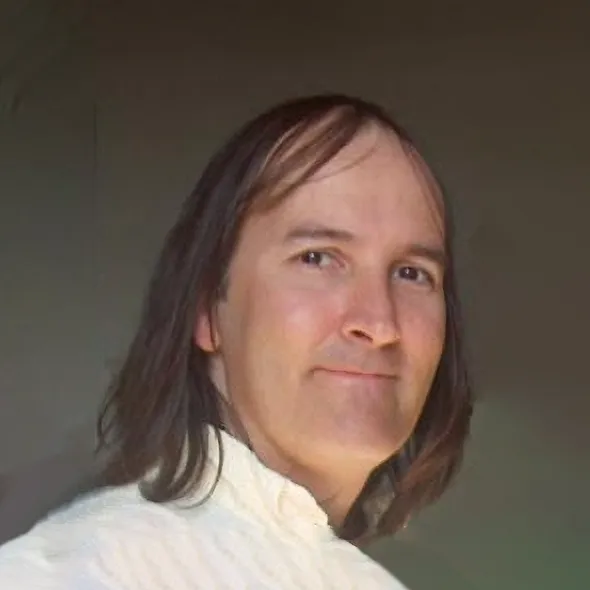Dr. Kirk Martinez
The Nature article 2020 computing: Everything, everywhere said
“Tiny computers that constantly monitor ecosystems, buildings and even human bodies could turn science on its head…Things don’t get much more palpable than the experience of having an offshoot of Europe’s biggest ice sheet grinding you into the granite below. That is the lot in life of the sensor web that Kirk Martinez, of the University of Southampton, UK, has been running for the past few years. He is helping glaciologists to study the dynamics of the Briksdalsbreen glacier in northwest Norway, part of the Jostedalsbreen ice field, in the hope of better understanding the impact of climate change and weather patterns on the ice field.
Martinez’s team uses a hot-water ‘drill’ to place pods — a dozen at any one time — at different locations deep under the ice. Each pod is equipped with sensors that measure variables such as temperature, pressure, and movement; the data collected are used to work out the rate of flow of the glacier and to model subglacial dynamics. The sensor web can be programmed in such a way that the individual pods cooperate. ‘You can get the pods talking to each other, and deciding that nothing much has happened recently as most of our readings have been the same, so lets the rest of us go to sleep and save batteries, with one waking us up if something starts happening’, says Martinez.
Watchful eyes: tiny computers called motes may one day be in everything. Martinez himself is a computer scientist, not a glaciologist. He was drawn to the task of remotely monitoring a hostile environment around the clock because he wanted the challenge of trying to bring together the various different technologies such sensor webs need. ‘This is very, very technologically tricky stuff’, he says.”
Dr. Kirk Martinez is Senior Lecturer in Computer Science at the University of Southampton, UK and leads the Glacsweb project which monitors glacier behavior using sensor networks.
Kirk is also Commissioning Editor for Computers and the Humanities Journal, Founder of the Virtual Library for History of Art, Co-Founder of the EVA conference, Member of the Programme Committee of Very High Resolution and Quality Imaging III, Electronic Imaging ‘98, Member of the Programme Committee of Electronic Image Capture and Publishing in SYBEN ‘98, Zurich 1998, Member of Technical Programme Committee of IEEE/IS&T Colour in Graphics, Imaging and Vision (CGIV) Apr 2002, Member of the Archimedes Palimpsest advisory team which looked into new image processing possibilities to read the manuscript. Watch the Google Video explaining this project! He was Co-Chair of Environmental Sensor Networks session of the 2004 American Geophysical Union Conference 2004, and Co-Chair of Emerging Technology for Environmental Sensor Networks conference at the AGU 2005.
He coauthored Glacial Analysis (Routledge Interactive Learning Modules) (CD-ROM), 3-D Shape Descriptors and Distance Metrics for Content-Based Artefact Retrieval in Proceedings of Storage and Retrieval Methods and Applications for Multimedia 2004, Glacsweb: a sensor network for hostile environments in Proceedings of The First IEEE Communications Society Conference on Sensor and Ad Hoc Communications and Networks, and Links in the Palm of your Hand: Tangible Hypermedia using Augmented Reality in Proceedings of The Thirteenth ACM Conference on Hypertext and Hypermedia. Read the full list of his publications!
Kirk earned a BSc in Physics from the University of Reading, UK and a Ph.D. in digital image processing from the Electronics Systems Engineering Department at the University of Essex, UK. Watch Kirk on ITV Anglia as he talks about his 80s Ph.D. work!
